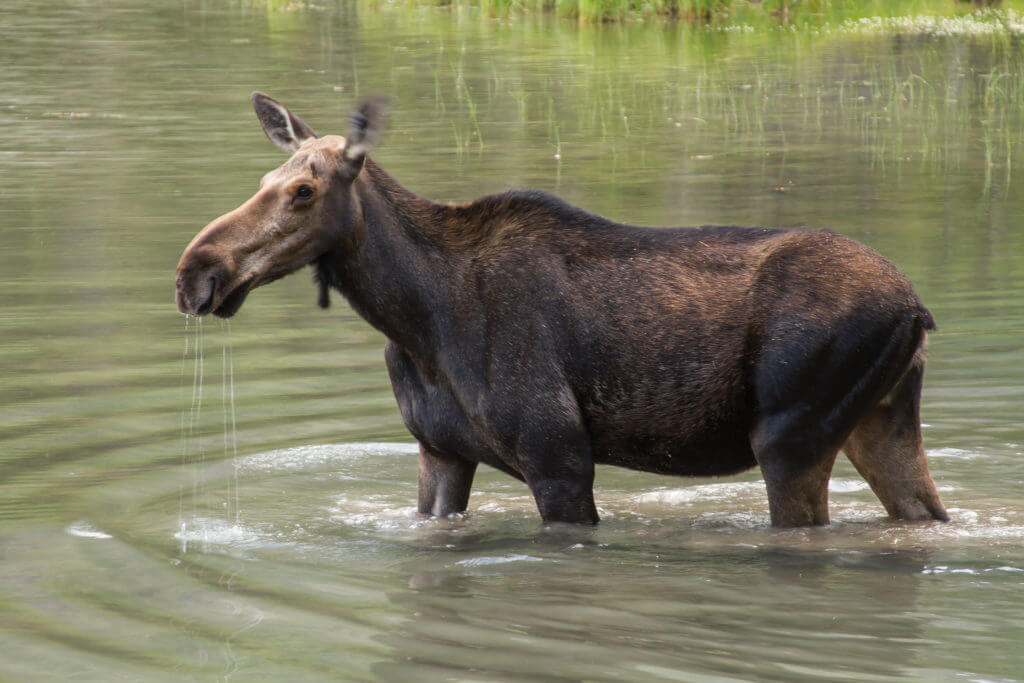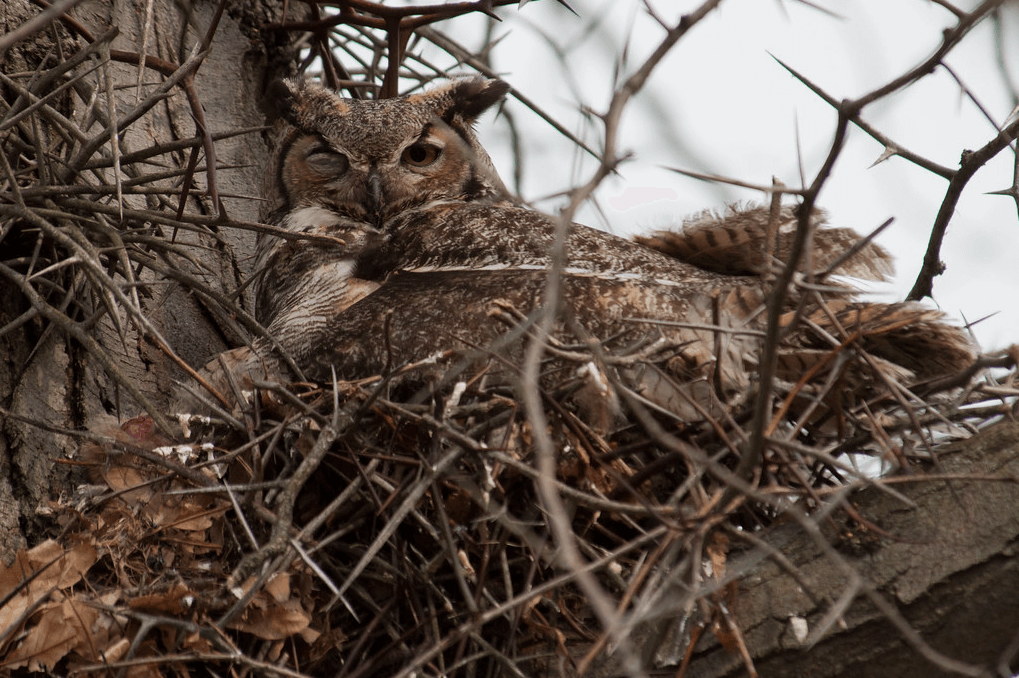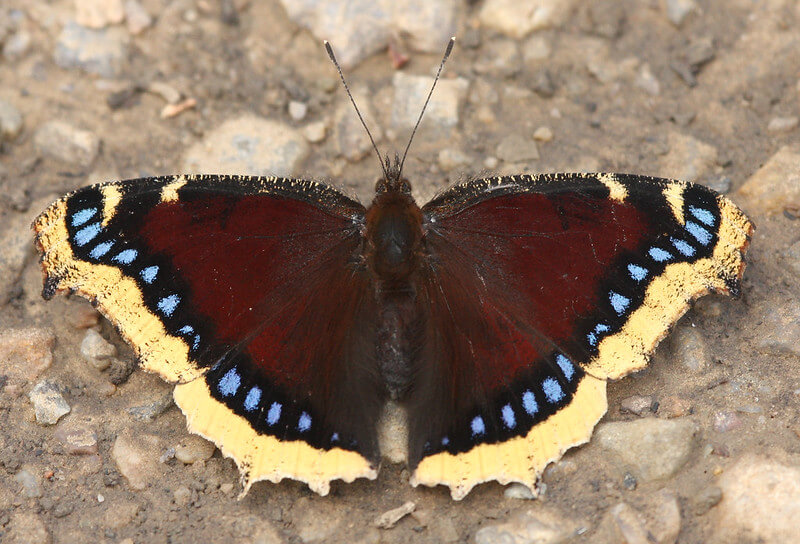Moose Size
by Danielle Lattuga
Broadcast 6.4 & 6.9.2017 and 5.26 & 5.29.2020

Cow moose feeding in a lake in Glacier National Park. Photo by David Restivo, public domain.
Listen:
On a sunny June day, I was standing among a group of budding naturalists, sketching the bark of a cottonwood tree. Suddenly, I heard a series of quiet gasps and more than a few titters ripple through our small crowd. Someone had spotted a cow moose and her calf crossing the path just a few feet away from us. We all turned to watch them on their route to the Bitterroot River. They were an elegant pair. The sunlight reflected off their caramel-colored backs, while the mother kept close to her calf and kept a wary eye on us until she was sure we weren’t going to follow.
I enjoyed the treat of seeing them right along with everyone else, but having recently returned from a two-year hiatus in Alaska, I thought, “These two moose are really tiny.”
It seems that every time we saw a moose in Alaska, we’d exclaim, “Look at that big moose!” We couldn’t describe one without using some sort of grandiose adjective. But here in Montana, the moose are not so big—even though they warrant as much appreciation.
In the 1950s, a scientist by the name of Peterson classified the moose of North America into four subspecies, based on skull measurements. Those subspecies are Northwestern, Eastern, Alaskan, and Shiras—the latter being the kind that we have in Montana.
One possible explanation for why moose get larger the further north you go is based on an ecogeographical principle called Bergmann’s Rule. Basically, larger animals have a lower surface area to volume ratio than smaller animals, so they radiate less body heat per unit of mass and as a result, stay warmer in cold climates. But, this does not explain differences among moose from east to west. What gives?
Moose evolved in Asia and crossed the Bering Land Bridge into North America, after the last ice age. So, all moose on this continent are related genetically (unlike those in Russia and elsewhere, who have shown chromosomal distinctions). This is one factor that has led contemporary scientists to believe that the size differences may not be based on genetics, but more on habitat. The theory is that with higher quality forage, you get better habitat, which equals bigger, more productive moose. Here in the Montana Rockies, moose are not only smaller, but they are less productive. Cows only produce twins 5-10 percent of the time, as compared to the 20-70 percent (!) rate that Alaskan moose have demonstrated. Also, the age at which Shiras moose first reproduce tends to be a year later than their larger, more northerly cousins.
Scientists are currently comparing genetics of moose all the way up from Colorado to Alaska and down and over into North Dakota to see if there really is a genetic distinction that matches what Peterson saw in the ‘50s and whether there are more indicators that point to habitat as a factor in size.
In the meantime, I am sure I will come up with some other adjectives to describe our Montana moose encounters.
Every week since 1991, Field Notes has inquired about Montana’s natural history. Field Notes are written by naturalists, students, and listeners about the puzzle-tree bark, eagle talons, woolly aphids, and giant puffballs of Western, Central and Southwestern Montana and aired weekly on Montana Public Radio.
Click here to read and listen to more Field Notes. Field Notes is available as a podcast! Subscribe on iTunes, Google Play, or wherever you listen to podcasts.
Interested in writing a Field Note? Contact Allison De Jong, Field Notes editor, at adejong [at] montananaturalist [dot] org or 406.327.0405.
Want to learn more about our programs as well as fun natural history facts and seasonal phenology? Sign up for our e-newsletter! You can also become a member and get discounts on our programs as well as free reciprocal admission to 300+ science centers in North America!












